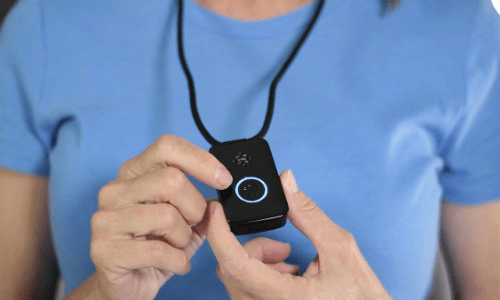
10.10.19 – SSI – Jonathan Knoder
The PERS market is estimated to reach more than $8.6 billion by 2022, with a large majority of market growth expected to be driven by the mPERS segment.
When a security dealer is looking into investing in the personal emergency response (PERS) industry, they often do not consider the full scale of the opportunity. There are an estimated 47 million senior citizens living in the United States. Senior citizens are also the fastest growing demographic. People are living longer and using PERS devices at a younger age, so the market continues to grow.
Evolution From Landlines to Mobile
The marketplace has seen a massive shift in PERS technology over the past 12 years. This comes with the wireless evolution of technology. According to the U.S. Department of Health and Human Services (HHS), more than 50% of all homes don’t have a landline. Only 40% percent of all homes have both a landline and cell phone, while only 10% of homes are landline only or phone free. Thus, the disconnection from wired services is going to continue and grow. Because of this shift in technology, the PERS industry taking strides in the same direction.
AvantGuard Monitoring Centers‘ entry into the industry began around 2007 when a PERS dealer approached the company to monitor their accounts. Since AvantGuard already had the technology platform in place to monitor PERS devices, the company took on the account. This initial endeavor proved successful and AvantGuard has since focused on growing its dealer partnerships by monitoring PERS as well as security. This ultimately lead to AvantGuard hosting the first ever PERS Summit in 2012, an event for dealers in the PERS industry to gather and explore new opportunities and technology within the industry.
The demise of POTS lines has given rise to mPERS products with cellular technology. Cellular technology was first introduced by updating existing form factors with cellular radios instead of using landlines. Due to their mobile nature, mPERS devices require location technology allowing monitoring centers to obtain the location of the device.
This started with 2G. While 2G and 3G provided the beginning of advanced cell coverage, 4G LTE has all but completely taken over. LTE offers faster signal times and better signal coverage for mPERS devices. In 2022, AT&T will completely shut down its 3G network, while Verizon will completely shut down its 3G network by the end of this year. Very soon, we’ll start to see the rollout of 5G technology, which will ultimately change the landscape of cellular technology again. Because of 4G LTE and 5G evolution in cell phone technology, mPERS devices continue to adapt.
Many mPERS devices also use GPS technology to help locate users. GPS uses satellites that orbit the Earth to send signals to mPERS devices to locate the user. GPS technology on average is accurate within 13 feet of the actual location.
Early mPERS devices used cell tower triangulation and/or GPS for locations. Both of these technologies have strengths and weaknesses depending on geography, man-made structures and device locations. GPS-enabled devices often offer shorter battery life due to the energy intensive nature of communicating with positioning satellites.
Location services for WiFi enabled mPERS devices has provided a fast and reliable location method that can find the user’s location based on triangulation of the WiFi access points around the device. In addition to providing rapid and accurate location data including from within a multistory building, obtaining a WiFi location is significantly less power intensive.
A good example of adaptation of technology are the Belle LTE and Belle+ LTE mPERS devices from Freeus. The LTE versions of the devices replace similarly featured 3G versions of the Belle and Belle+. The Belle includes WiFi location technology and has a 30-day battery life. The Belle+ features both GPS and WiFi location technologies as well as optional fall detection. For Freeus, and many other manufacturers, new devices continue to become smaller and lighter with each generation.
In 2015, the PERS market was estimated at $5.6 billion dollars. By 2022, it is estimated to reach more than $8.6 billion, growing at a compound annual growth rate (CAGR) of 6.35%. It is safe to assume that the large majority of that growth will be in the mPERS segment due to the rapid and expansive growth of smartphone technology. Consider, for example: since 2012, the amount of mPERS devices that are monitored compared to traditional PERS devices has shifted at Avantguard’s monitoring center in Ogden, Utah, from less than 1% to 75%.
This shift shows great potential in the mPERS marketplace for monitoring centers and dealers to capitalize on. This segment is only going to continue to grow.
Jonathan Knoder is Content Manager for AvantGuard Monitoring Centers.
